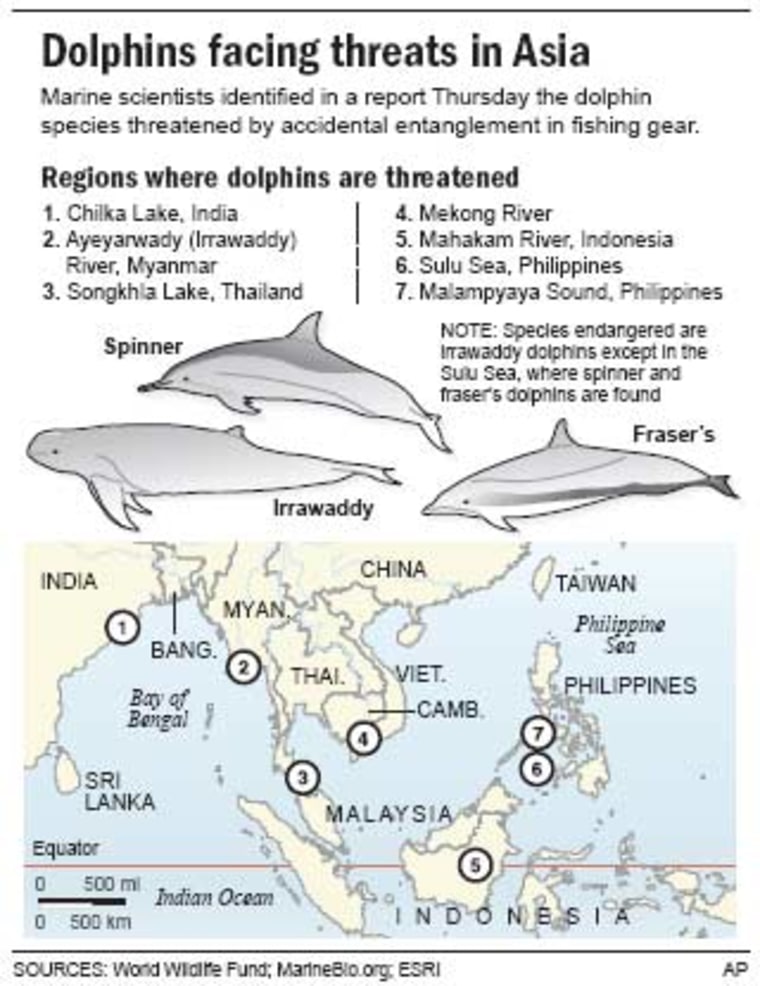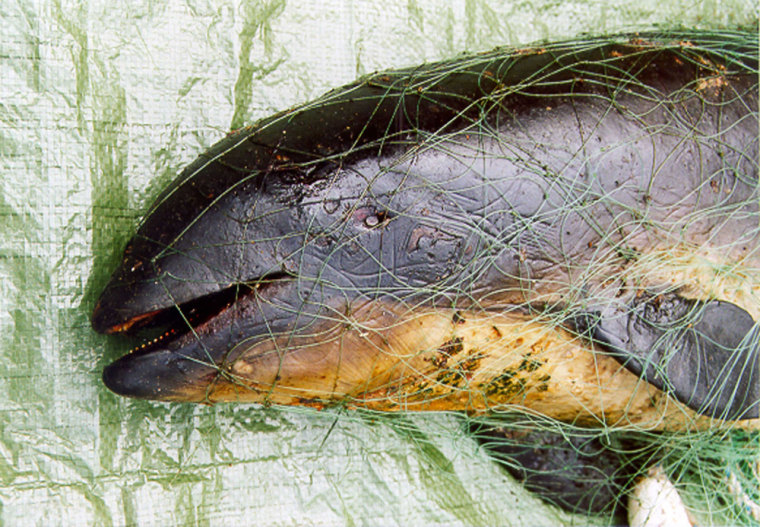From Southeast Asia to the Black Sea, fishing nets have become deathtraps for thousands of dolphins and porpoises — and yet low-cost changes could save 10 species threatened with extinction, the World Wildlife Fund said Thursday.
The group released a marine scientists' report that listed species threatened by accidental catch, and recommended low-cost steps to reduce their entanglement in fishing gear.
The report estimated 1,000 whales, dolphins and porpoises die each day in fishing nets, trapped underwater and unable to surface to breathe.
Dolphins and porpoises were the focus of the new report, and dolphins in the Philippines, India and Thailand were identified as urgent priorities.
Threatened populations include Irrawaddy dolphins in Malampyaya Sound off the Philippines' Palawan island, about 220 miles south of Manila. The report said only 77 remain.
Aquarium trade also a threat
Dolphins also face the threat of traders who sell them to aquariums, especially in Asia, the report said.

Other threatened populations include Spinner and Fraser's dolphins in the Philippines' Sulu Sea. The WWF report said up to 3,000 Spinner dolphins may be caught each year in gillnets, which stretch from the sea floor to the surface and are hard for dolphins to see or detect with their sonar.
In Asia, dolphins are also under threat in Indonesia, Myanmar, India's Chilka Lake and Thailand's Songkhla Lake, the WWF said.
The report said nine dolphin and porpoise populations — 10 species in total — need immediate action if they are to survive the threat of commercial fishing nets.
Other species include:
- Black Sea porpoises, thousands of which die each year in nets.
- Atlantic humpback dolphins, which face the same fate off the coasts of Ghana and Togo in Africa.
- Franciscana dolphins in Argentina, Uruguay and Brazil.
- Indo-Pacific humpback and bottlenose dolphins off the south coast of Zanzibar.
Most of the animals are threatened by the widespread use of one type of fishing gear — gillnets, the WWF report said.
Few countries follow U.S. lead
U.S. fisheries in 1993-2003 introduced changes that reduced by a third the number of dolphins accidentally killed by fishing, or bycatch, the WWF said.
But few other countries have followed that example, "and in much of the rest of the world, progress on bycatch mitigation has been slow to nonexistent," the group said.

"These accidental deaths can be significantly reduced, often with very simple, low-cost solutions," said Karen Baragona of WWF's species conservation program. "Slight modifications in fishing gear can mean the difference between life and death for dolphins."
Innovations include attaching acoustic alarms to nets. The method, which scares marine mammals away, has reduced harbor porpoise deaths in the Gulf of Maine.
Whales, which like dolphins and porpoises are part of the cetacean family of marine mammals, were not the focus of the report but they face similar threats and have been studied in-depth before.
The full report is online at www.worldwildlife.org/news/displayPR.cfm?prID=203.
